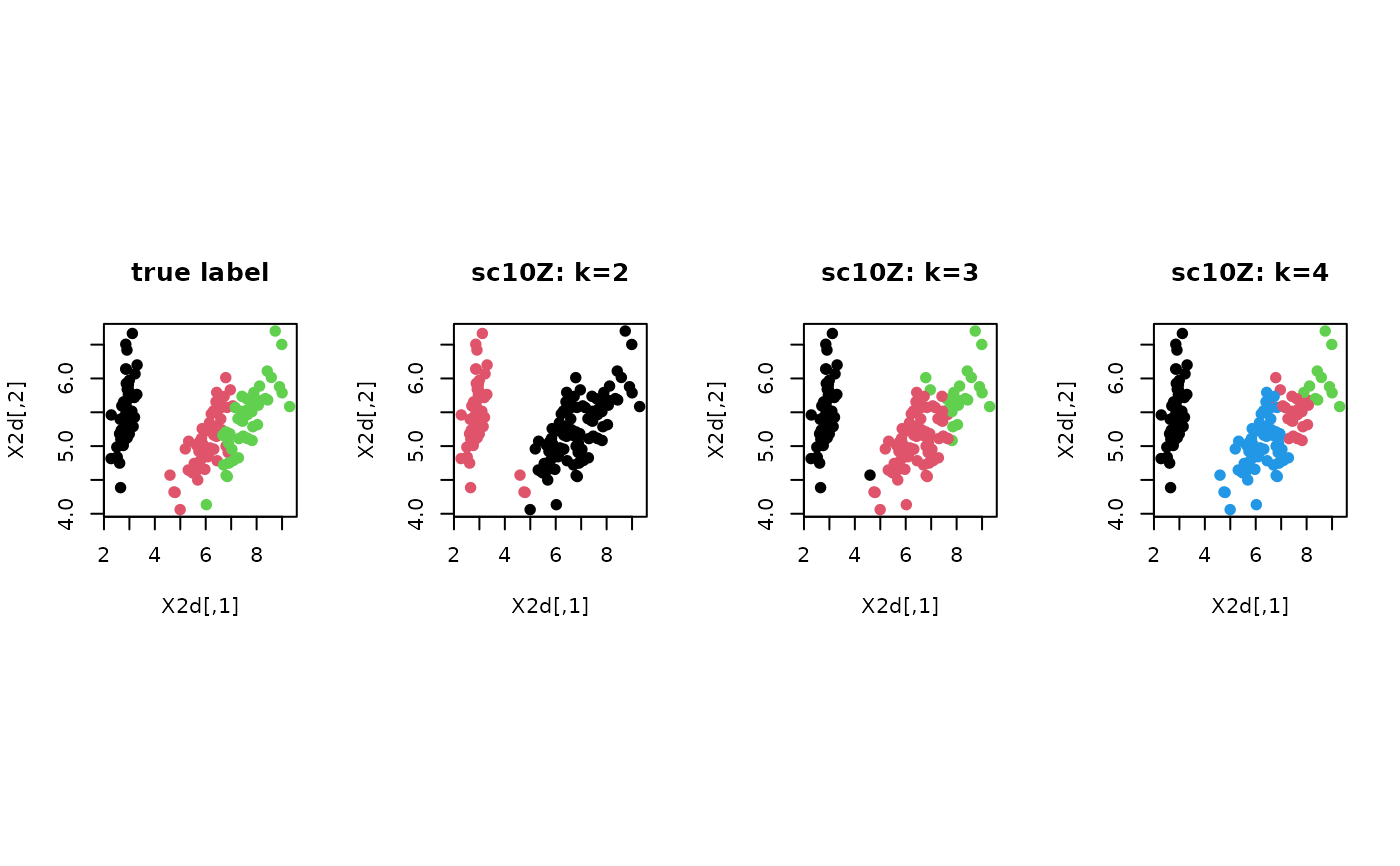The algorithm defines a set of data-driven
bandwidth parameters \(p_{ij}\) by constructing a similarity matrix.
Then the affinity matrix is defined as $$A_{ij} = \exp(-d(x_i, d_j)^2 / 2 p_{ij})$$
and the standard spectral clustering of Ng, Jordan, and Weiss (scNJW) is applied.
sc10Z(data, k = 2, ...)
Arguments
| data | an \((n\times p)\) matrix of row-stacked observations or S3 |
|---|---|
| k | the number of clusters (default: 2). |
| ... | extra parameters including
|
Value
a named list of S3 class T4cluster containing
- cluster
a length-\(n\) vector of class labels (from \(1:k\)).
- eigval
eigenvalues of the graph laplacian's spectral decomposition.
- embeds
an \((n\times k)\) low-dimensional embedding.
- algorithm
name of the algorithm.
References
Zhang Y, Zhou J, Fu Y (2010). “Spectral Clustering Algorithm Based on Adaptive Neighbor Distance Sort Order.” In The 3rd International Conference on Information Sciences and Interaction Sciences, 444--447. ISBN 978-1-4244-7384-7.
Examples
# ------------------------------------------------------------- # clustering with 'iris' dataset # ------------------------------------------------------------- ## PREPARE data(iris) X = as.matrix(iris[,1:4]) lab = as.integer(as.factor(iris[,5])) ## EMBEDDING WITH PCA X2d = Rdimtools::do.pca(X, ndim=2)$Y ## CLUSTERING WITH DIFFERENT K VALUES cl2 = sc10Z(X, k=2)$cluster cl3 = sc10Z(X, k=3)$cluster cl4 = sc10Z(X, k=4)$cluster ## VISUALIZATION opar <- par(no.readonly=TRUE) par(mfrow=c(1,4), pty="s") plot(X2d, col=lab, pch=19, main="true label") plot(X2d, col=cl2, pch=19, main="sc10Z: k=2") plot(X2d, col=cl3, pch=19, main="sc10Z: k=3") plot(X2d, col=cl4, pch=19, main="sc10Z: k=4")
